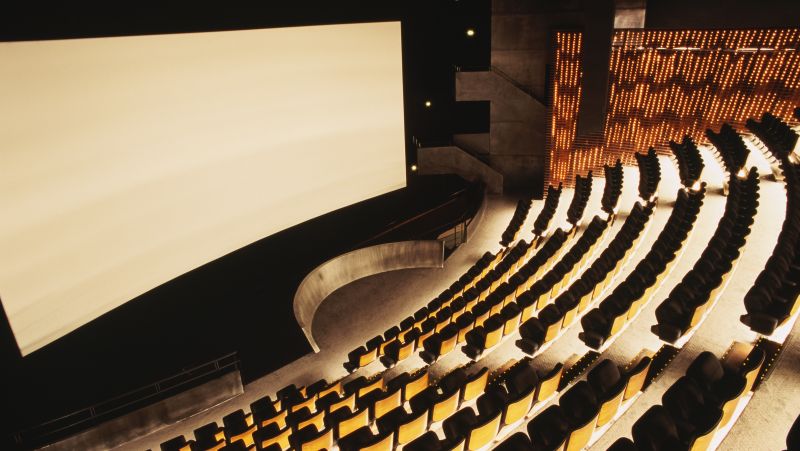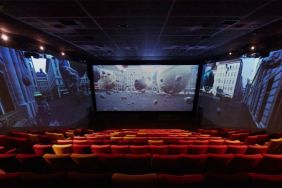4 things you may not know about movie theater screens
Contrary to some belief, movie theaters are doing pretty well. Summer 2018 revenue is on track to become the fifth best so far. Going to the multiplex involves many things, such as overpriced concessions, crowded restrooms, and, obviously, staring at a screen. What you might not know is that movie theater screens are not all alike; they come in many sizes, forms, and colors. Here are some fun facts about movie screens that you might not know.
1. Screens Use Masking For Different Aspect Ratios
There are two aspect ratios commonly used by filmmakers today: scope and flat. Scope is the wider ratio while flat looks more like your average modern 16:9 computer or television screen. A theater screen, however, can’t just change shape; it is either scope or flat. When a flat movie is projected on a scope-shaped screen, the audience sees annoying black bars on the right and left known as pillarboxing. When a scope movie is projected on a flat-shaped screen, the audience sees annoying bars on the top and bottom known as letterboxing. (On some flat systems, scope movies will have one large bar on the top). These bars are especially annoying when a 2D movie is projected on a screen designed for 3D shows, as those screens make for a brighter projection and thus the bars appear very bright and visible.
To avoid this scenario, theaters install black curtains to move around depending on what aspect ratio the movie was shot in, known as masking. Masking is a great way for theaters to show both scope and flat movies in the same auditorium without having to worry about bright and distracting black bars. (Unless, of course, it’s a Michael Bay film with four different aspect ratios!)
Rapid Returns: 8 Movie Franchises That Frequently Reboot
2. Screens Have Tiny Holes In Them For The Speakers Behind Them
What would a theater auditorium be without great audio? Speakers installed on the right and left walls and often in the back as well as on the ceiling make for immersive sounds. Those places, however, aren’t the only ones for speakers. In most theaters, speakers are installed behind the screen as well. For the sound to make it from those speakers to the audience, tiny holes are put into the screen. These perforations are so small that they aren’t noticeable during the show. Regardless of whether you sit in the first or the last row, a speaker isn’t too far away.
3. Not All Screens Are Completely White Or Completely Silver
It is indeed called the “silver screen,” but is that really true for all movie theater screens? Most theater screens aren’t completely white or completely silver. They’re pearlescent. That provides good contrast and ensures the image isn’t too bright. With 3D projections, some screens have been painted more silvery so the image becomes brighter. It also makes up for the dimmer projection which comes as a result of 3D.
The reason screens aren’t completely white is that a purely white screen isn’t very reflective and the image isn’t bright enough. When an image is dimmer, however, it does make for blacker blacks. You will notice a similar effect when you dim the brightness of your computer or phone. With pearlescent screens, the audience gets a good balance between brightness and decently dark blacks.
Best On The Big Screen: The Top 5 Kathryn Bigelow Movies
4. Some Screens Float, Some Screens Don’t
For a theater screen to stand steady, it needs to be attached to something. It can either be attached to the wall or it can be attached to a separate frame. When a ladder is in use, we’re talking about a floating screen. Floating screens are especially prevalent in large formats such as IMAX or RPX. They allow for more space to be used when installing a screen; sometimes, installing it to a wall would limit its size. The caveat is that people haven’t exactly figured out how to install masking for floating screens, which is why it’s not unlikely that you’ll see a letterboxed show on one.
(Photo credit: Getty Images)










